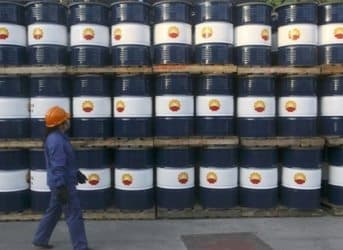China has been buying up oil at a record pace in order to stockpile reserves for a rainy day as part of its strategy to insulate the country from geopolitical conflict or supply disruptions. It’s modeled after the U.S. strategic petroleum reserve (SPR).
However, the heightened rate at which China is purchasing oil is driving up global oil prices.
Dating back to the oil embargo of 1973, the U.S. government has maintained an SPR to guard against future oil supply disruptions and/or price spikes. Located in salt caverns in Texas and Louisiana, the Department of Energy’s SPR has a capacity of 727 million barrels of storage.
Similarly, the International Energy Agency (IEA) – whose 29 members include Western countries plus Australia, Korea, and Japan – are required to hold the equivalent of 90 days’ worth of oil supply in a reserve.
China, who is not a member of the IEA, for years did not have significant volumes of oil set aside as in a reserve. But as the world’s second largest oil consumer of oil, and one highly dependent on imports, China recognized the threat its oil consumption presents to its economy.
When China’s economy was undergoing explosive growth at the turn of the 21st century, it embarked upon a strategy to build up its strategic stockpiles as part of its 10th Five-Year Plan, beginning in 2000.
A three-phase program was instituted that would eventually lead to the stockpiling of 100 days’ worth of imports. The first strategic reserve was completed in 2008, with a facility located on Aoshan Island, about 186 miles south of Shanghai. By 2009, when the first phase was completed, China had constructed four facilities capable of holding 103 million barrels.
The second phase will consist of storage fit to handle 191 million barrels across seven sites, with several currently under construction. In all, China’s 100-day supply will hold an estimated 680 million barrels by 2020, based on today’s consumption levels.

Related Article: OPEC Meets As World Oil Demand Rises, Production Sputters
Although targets were broadly laid out, China does not publish data on what it is holding at any given time. But according to China National Petroleum Corp., China had 141 million barrels in storage at the end of 2013.
And while market analysts understand that China needs to buy up oil in order to meet its storage targets, Bloomberg News found that China has been hoarding oil at an unprecedented clip since the beginning of the year, amassing over 600,000 barrels per day.
On the one hand, this is enhancing China’s energy security; by building storage capacity, the government can be prepared in the event of a supply outage. It will shield the economy from shortages and provide the Chinese government with ammunition if prices spike too high.
Additionally, the move is very timely. The first half of 2014 has been riddled with geopolitical conflict, which entered a new phase of instability this week with the chaos in Iraq.
ADVERTISEMENT
But the stockpiling – intended in part to guard against price spikes – is contributing to higher oil prices. By adding over a half million barrels per day to global demand, oil markets are feeling the squeeze. Moreover, there is a psychological impact – the appearance of China scrambling to hoard oil can bid up prices. “This panicked stockpiling is one of the ways that geopolitical tensions can actually tighten physical oil markets,” Seth Kleinman, a Citigroup analyst, told Bloomberg in an interview.
And buying enormous volumes of oil when prices are high will cost China much more. Buying an additional 600,000 barrels per day over and above what is normally needed will cost China an additional $66 million per day, assuming Brent prices of $110 per barrel.
For the world’s second largest economy, that is a small price to pay. China views geopolitical instability as a much greater threat to the economy than higher oil prices. But with world oil markets already growing tight because of unrest in several OPEC countries, China’s buying spree is only adding to market pressure.
By Nick Cunningham of Oilprice.com


















